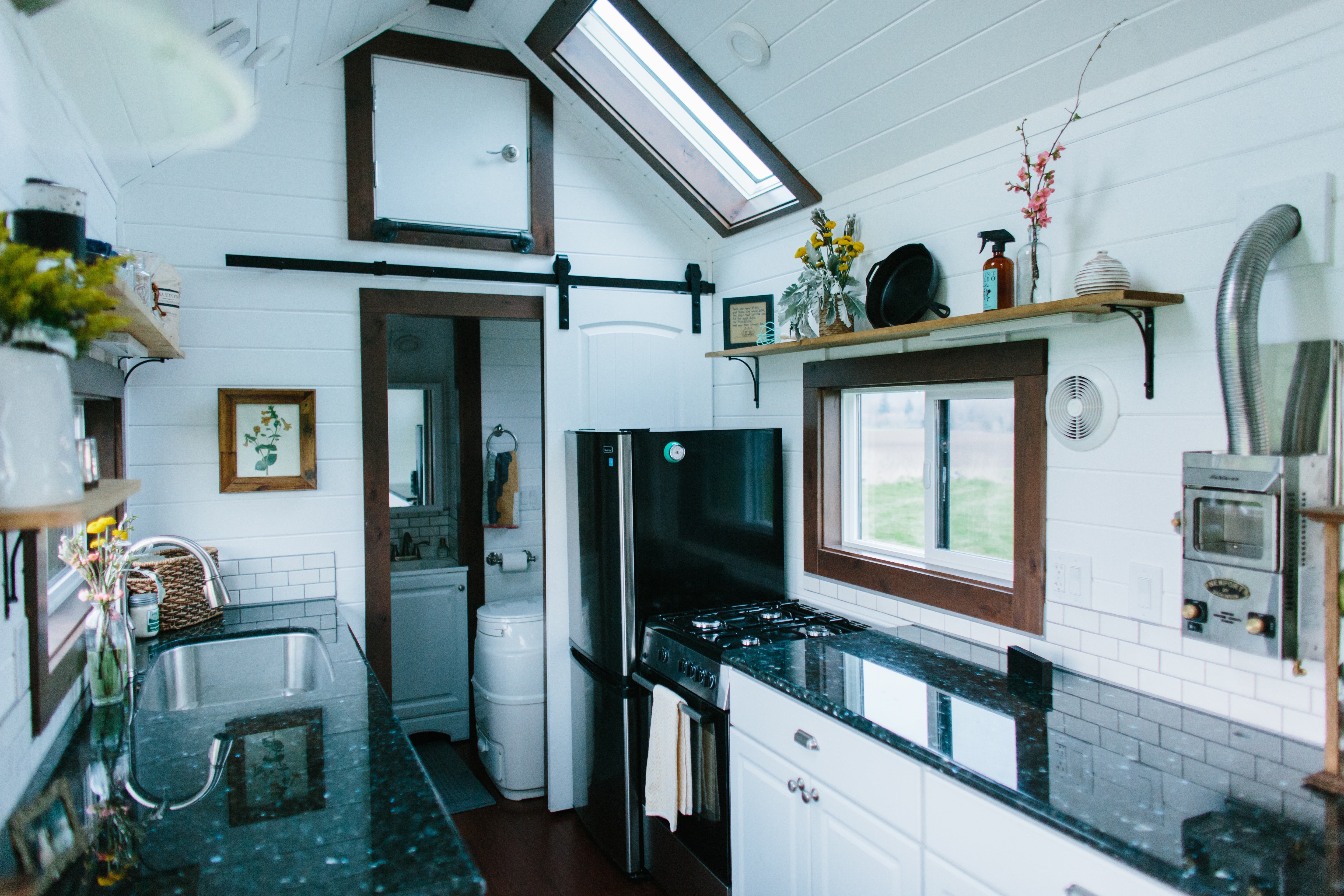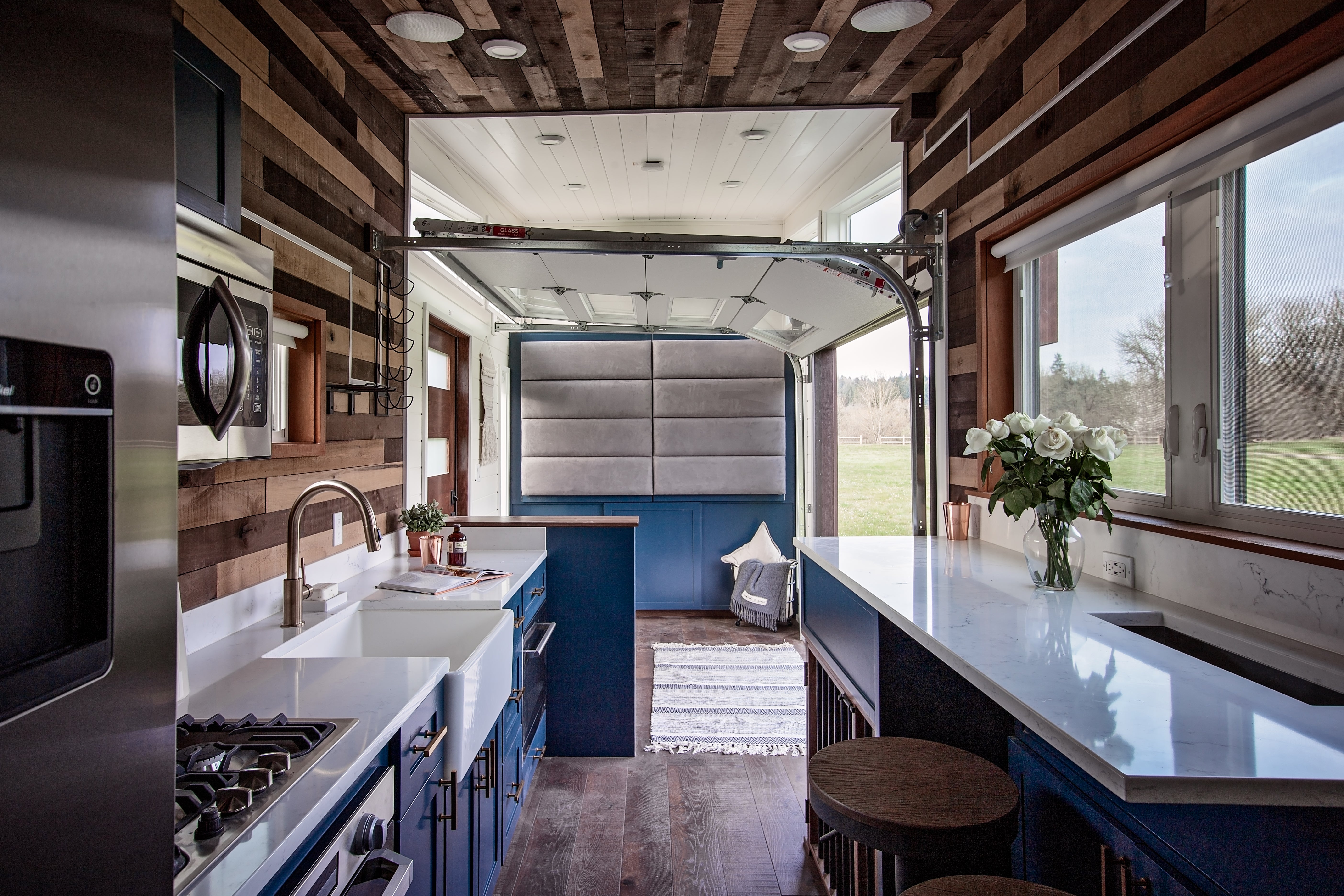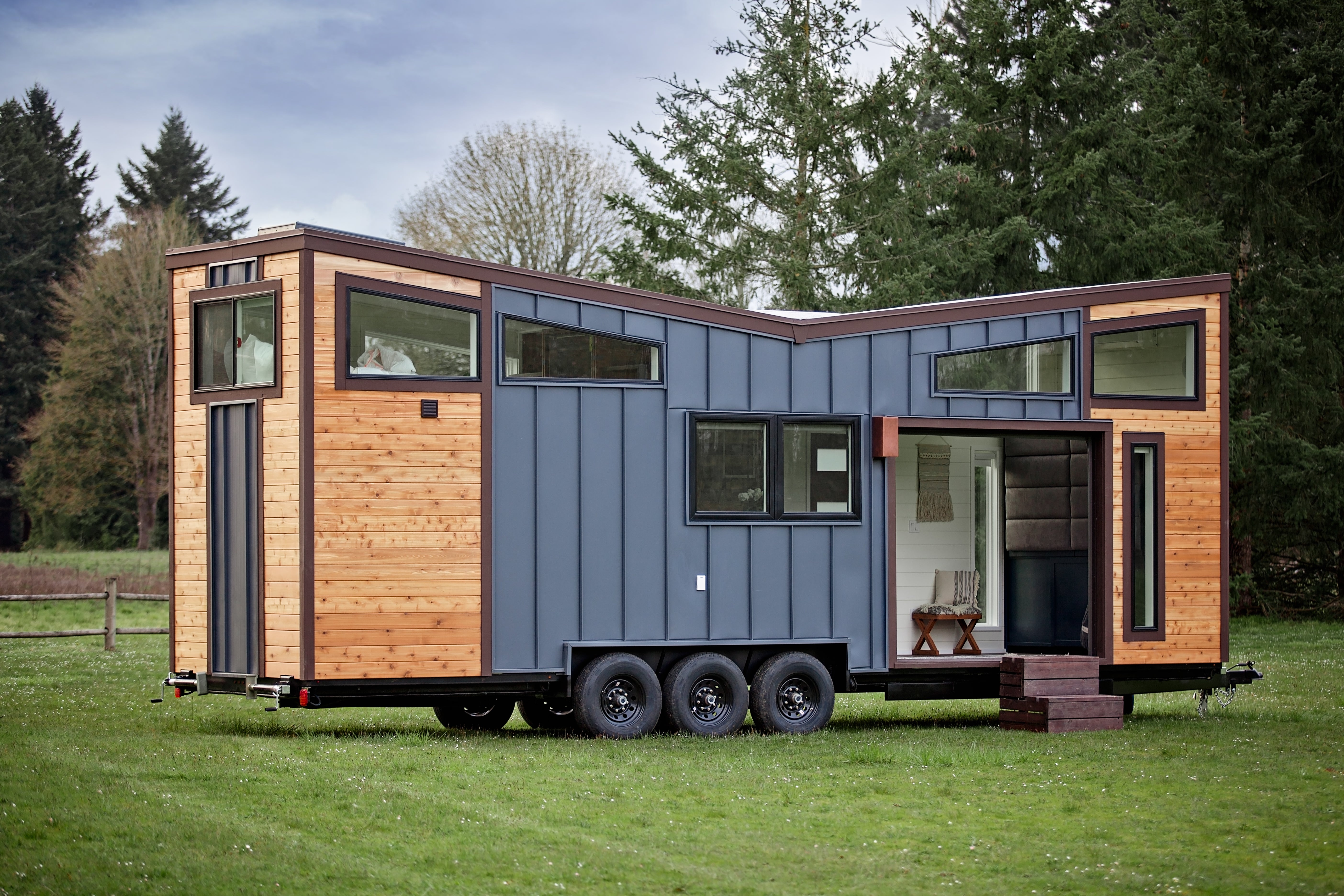Boost tiny home resale value by proving build quality (kiln-dried lumber, certified materials, tight tolerances), efficient layouts (70–80% usable area, cross-ventilation), and legal compliance (zoning, permits, foundation).
Document energy performance (≤3 ACH50; R-21+/R-30+/R-38+), 12-month utility bills, and off‑grid/solar capability. Verify land rights, HOA health, and market comps. Provide serials, manuals, and maintenance logs. Time pricing to inventory and absorption rates; test interest via CTR, inquiries, and tours. Next, see how to apply these benchmarks.
Key Takeaways
-
Documented build quality (certified materials, sealed permits, maintenance logs) increases buyer confidence and resale price; undocumented or DIY defects depress value.
-
Efficient layouts (70–80% usable area, wet-core adjacency, storage solutions) and cross-ventilation boost livability and price; cramped, poor circulation lowers demand.
-
Prime locations with verified land rights, utilities, and favorable HOA conditions command premiums; uncertain zoning or short-term land leases reduce value.
-
Proven energy performance (audits, low ACH50, high R-values, solar) and 12-month utility bills raise price; drafty envelopes and unknown efficiency cut offers.
-
Pricing aligned to comps, inventory, and absorption rates sells higher; overpricing amid growing supply forces concessions and longer time to sale.
Build Quality, Materials, and Craftsmanship
Although location and layout matter, buyers often start by scrutinizing build quality, materials, and craftsmanship because these factors drive durability, maintenance costs, and appraisal confidence. You should document framing standards (e.g., kiln-dried lumber, corrosion-resistant fasteners), insulation R-values, and moisture control details, since verified specs reduce perceived risk. Inspect joinery, tolerances, and weatherproofing; tight gaps and clean penetrations signal precision.
Quantify material sourcing: certified woods, low-VOC finishes, and warrantied roofing or siding increase buyer trust. Provide serial numbers, installation dates, and manuals for mechanicals; third-party inspections and photos of in-wall work add credibility. Align design aesthetics with durable finishes—solid-surface counters, metal roofing, composite decking—showing lifecycle cost advantages. Track maintenance logs and defect rates; fewer repairs correlate with stronger resale offers.

Layout, Space Optimization, and Livability
Because buyers equate square inches with utility, prioritize a layout that converts footprint into measurable function: target 70–80% usable floor area, 18–24 inches of circulation clearance, and 24–30 inches around primary work zones. Use an open floor plan to reduce partition loss and improve sightlines; you’ll boost perceived volume without increasing size. Specify ceiling heights of 7'6"–8'0" in primary zones to improve air feel and code compliance.
Design multifunctional spaces that deliver double duty: a sofa that converts to a bed, a table that folds from 24" to 48", and stairs with 10–15 cubic feet of storage. Keep wet-core adjacency—kitchen, bath, laundry—within 8–10 linear feet to shorten runs. Place operable windows on two orientations to enhance cross-ventilation and lower HVAC loads.
Location, Land Rights, and Community Amenities
While design drives livability, geography drives resale. Buyers pay premiums for proximity to employment hubs, transit, healthcare, and groceries. Compare median sale prices within a 1–5 mile radius; homes in walkable areas typically resell faster and at higher ratios to list. Evaluate noise, flood or wildfire risk scores, and insurance premiums; elevated risk depresses value.
Verify land rights. Document deed restrictions, utility easements, and long-term land leases; assign risk if terms are short, escalators steep, or transfer rules unclear. Private parking, septic capacity, and grid connections reduce buyer friction and boost price confidence.
Assess community amenities and community vibe. Shared gardens, tool libraries, fiber internet, and security raise demand. Confirm HOA fees, reserves, service reliability, and adherence to local regulations; predictable governance supports resale.

Zoning, Permitting, and Legal Classification
Even if a tiny home is beautifully built, resale hinges on whether it’s legally placed and classified. Buyers discount risk. You should verify zoning regulations, permitted use, and legal classifications before listing. Confirm whether the home is an ADU, a THOW with RV status, or a modular dwelling under state code. Each path dictates setbacks, utility hookups, and financing eligibility.
Document everything. Provide stamped plans, final inspections, occupancy certificates, and serial/VIN data if applicable. Lenders and insurers often require proof of permanent foundation compliance (e.g., HUD, state modular, or local residential codes). Track permit numbers and dates; recent, closed permits correlate with faster sales and fewer price concessions. If the home is nonconforming, quantify remedies and costs. Transparent compliance reduces buyer uncertainty and supports higher offers.
Energy Efficiency, Insulation, and Sustainability Features
If you want top-dollar offers, quantify your tiny home’s performance and show the operating savings. Commission third-party energy audits and provide the report. Buyers value metrics: blower-door test results, R-values by assembly, U-factors for windows, and annual kWh/therm consumption. Target ≤3 ACH50, R-21+ walls, R-30+ floors, R-38+ roofs, and windows ≤0.30 U-factor.
Document insulation type and installation quality (continuous exterior insulation reduces thermal bridging). Include infrared images verifying uniform coverage and sealed penetrations. List appliance Energy Star ratings, lighting wattage, and smart thermostatic controls with logged usage.
Specify sustainable materials by certification and lifecycle data: FSC wood, low-VOC finishes, recycled-content insulation, and durable claddings with long warranties. Provide maintenance schedules and expected service life. Present utility bills for at least 12 months to validate modeled savings.
Off-Grid Systems, Utility Hookups, and Mobility
Quantifying performance doesn’t stop at the envelope; power, water, and mobility systems set resale expectations and appraisal comps. Buyers benchmark features against measurable outcomes: kilowatt-hours stored, gallons of fresh/grey capacity, and tow-ready infrastructure. Off-grid packages with lithium storage, 3–5 kW solar, and 50–100 gallons of water typically command premiums where utility costs are high or hookups are scarce; you signal self-sufficiency and lower operating risk.

Value hinges on verifiable specs: battery cycle life, inverter efficiency, solar production data, water filtration ratings, and generator runtime per gallon. Conversely, unpermitted or DIY electrical/plumbing lowers confidence and price. Full RV-style utility hookups (50A, sewer, potable inlet) widen buyer pools and appraisal comps. Document service records, component warranties, and utility bills to quantify off grid advantages and total cost.
Size, Weight, and Transport Considerations
While square footage drives livability, length, width, and gross vehicle weight rating (GVWR) drive resale and logistics. Buyers evaluate legal towability first: units under 8.5 feet wide typically avoid oversize permits; lengths of 20–28 feet balance space with maneuverability. Keep GVWR below common half-ton and three-quarter-ton tow capacities (7,000–10,000+ lbs) to widen your buyer pool.
You’ll boost value by documenting actual curb weight and tongue weight, plus axle ratings and balanced weight distribution. A tongue weight near 10–15% of total weight improves stability. Note frame material, trailer class, brake type, and tire load index.
Plan transport logistics: clearance height under 13’6”, turning radius, and recovery points for winching. Provide routes, permit requirements, and pilot-car thresholds for the destination state.
Maintenance Records, Upgrades, and Proven Durability
Because buyers discount uncertainty, documented maintenance and targeted upgrades materially lift tiny home resale value. You reduce perceived risk when you present a chronological maintenance history with receipts: roof inspections, sealant renewal, trailer service, brake checks, moisture readings, and appliance servicing. Buyers translate that record into lower future failure probability and fewer unknown costs.
Quantify upgrade impact. List date, cost, specs, and efficiency gains: a metal roof (40–70‑year life), closed‑cell spray foam (R‑value per inch ~6–7), heat pump COP, low‑e window U‑factor, or lithium battery cycles. Show durability metrics: leak‑free tests, IR scans for insulation continuity, chassis rust scores, and axle load margins. Standardize with photos and serial numbers. Keep warranties transferable. The result: tighter inspections, fewer concessions, and measurably higher offers.

Market Timing, Pricing Strategy, and Buyer Demand Trends
Those documented upgrades and durability metrics only translate into a premium if you list into receptive demand at a rational price. Track local and regional market trends: median days on market, list-to-sale ratios, and inventory levels for tiny homes and comparable ADUs. If inventory falls and absorption rises, you can price near the upper quartile; if supply expands, anchor to recent comps and tighten concessions.
Set an evidence-based price band using three benchmarks: last three comparable sales, current active competition, and pending transactions. Test pricing with pre-listing interest: click-through rates, inquiry volume, and tour requests. Align features with buyer preferences—off-grid capability, certified trailers, solar capacity, and turnkey furnishings. Time listings around peak search seasonality and relocation cycles to capture the broadest, solvent demand.
Conclusion
You boost tiny home resale value by proving quality, legality, and livability. Show certified build standards, durable materials, and optimized layouts. Verify zoning, titles, and permits; document maintenance and upgrades. Quantify efficiency with insulation R-values, energy bills, and solar outputs.
Detail hookups, off‑grid capacity, and tow weight. Provide location comps, land rights, and park amenities. Time listings to seasonal demand, price via recent sales, and adjust to DOM trends. Buyers pay premiums for verified data and reduced risk.






Share: